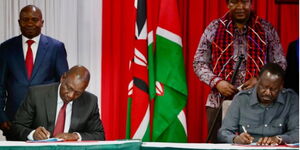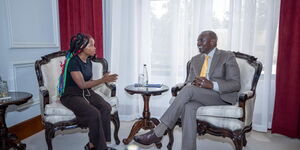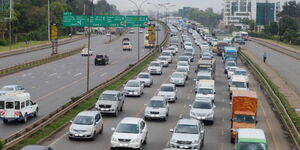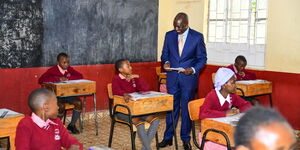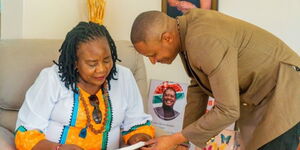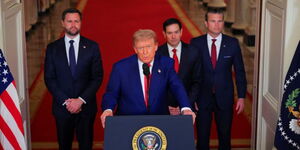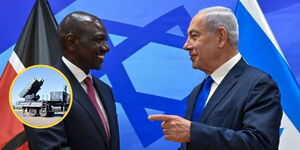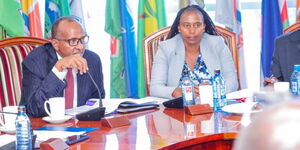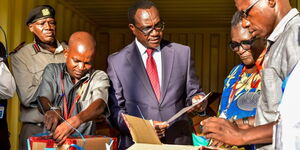As the Catholic Church mourns the passing of Pope Francis, focus now shifts to the Vatican as the process of selecting a new Pope begins.
The head of the Catholic Church passed away on Easter Monday, April 21, after battling double pneumonia for over one month.
“Pope Francis died on Easter Monday, April 21, 2025, at the age of 88 at his residence in the Vatican’s Casa Santa Marta,” Vatican News said in a tweet.
When the Pope dies or resigns, the Catholic Church enters a period of Sede Vacante or vacant seat, and during this time, the papal office is officially unoccupied. The process of selecting a new Pope is known as a papal conclave, and it follows a detailed procedure as outlined by the Catholic church.
The selection of a new Pope during the papal conclave is guided by a combination of tradition, theology, and political considerations. While there are no formal campaign processes, several key factors influence the voting process.
Cardinals consider the state of the Catholic Church and the issues it faces, such as theological debates and doctrine, church governance and reforms, relations with other religions and the secular world and the growth of Catholicism in different regions.
Cardinals often choose a candidate with strong theological knowledge, leadership experience as a bishop or cardinal, administrative skills, especially if reforms are needed and the ability to communicate effectively with the faithful worldwide.
In the selection, there are several geopolitical and regional considerations. Historically, Popes were mostly Italian, but in modern times, the Church has considered greater international representation. Cardinals may seek a Pope from a region where Catholicism is growing, such as Latin America, Africa, or Asia.
Perhaps a factor that plays a role but is not considered on a large scale is the influence of different factions. While the election is deeply spiritual, there are informal groups and alliances within the College of Cardinals. Cardinals aligned with different theological views (progressive, conservative, reformist) may support candidates reflecting their vision for the Church.
Upon the death of a Pope, as it was with Pope Francis, the Camerlengo (Cardinal Chamberlain) verifies the death and organises the papal funeral. The papal funeral in itself is a complex funeral that follows a detailed procedure.
In preparation for the papal conclave, cardinals worldwide travel to the Vatican. In the meantime, the College of Cardinals, which governs the Church temporarily, holds meetings to discuss the needs of the Church.
The College is a body of senior Catholic clergy appointed by the Pope. They serve as his closest advisors and, most importantly, elect a new Pope in the event of a vacancy. The College is composed of cardinal bishops, cardinal priests and cardinal deacons who all have varying functions and responsibilities.
Notably, only cardinals under the age of 80 are allowed to vote and travel to the Vatican for the papal conclave. Once they have gathered, the world-famous Sistine Chapel, located in the Pope’s official residence, is prepared, and all communication with the outside world is cut off to ensure secrecy.
The voting cardinals take an oath of secrecy, and the conclave begins with the "Extra Omnes" ("Everyone Out!") command, signaling that only eligible cardinals remain. Before the conclave begins, a Mass "Pro Eligendo Pontifice" ("For the Election of the Pontiff") is held to invoke divine wisdom.
The voting process during the conclave follows a series of secret ballots. A candidate must receive at least two-thirds of the vote to be selected as the new Pope. Each cardinal writes a candidate’s name on a paper ballot.
The ballots are counted and burned after each vote. Black smoke (fumata nera) signifies that no Pope has been elected. White smoke (fumata bianca) signifies that a new Pope has been chosen. If no Pope is chosen after multiple rounds, discussions may occur to narrow down candidates.
Once a candidate receives the required votes, he is asked: “Do you accept your election as Supreme Pontiff?” If he accepts, he chooses a papal name. The senior cardinal deacon announces to the world: “Habemus Papam” ("We have a Pope"), followed by the Pope’s chosen name. The new Pope then appears on the balcony of St Peter’s Basilica to give his first blessing.

